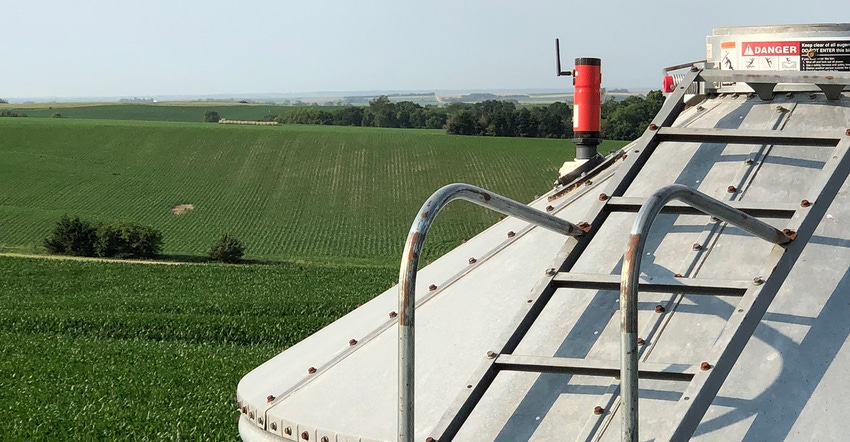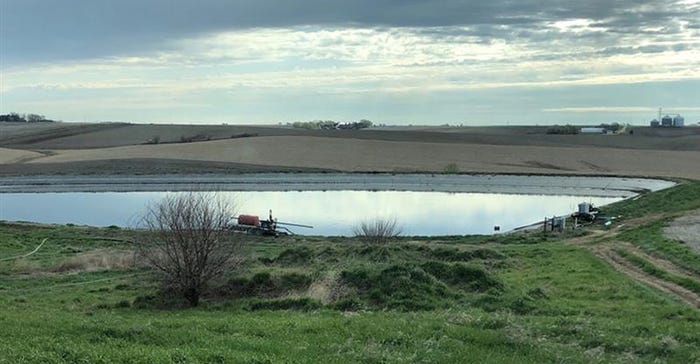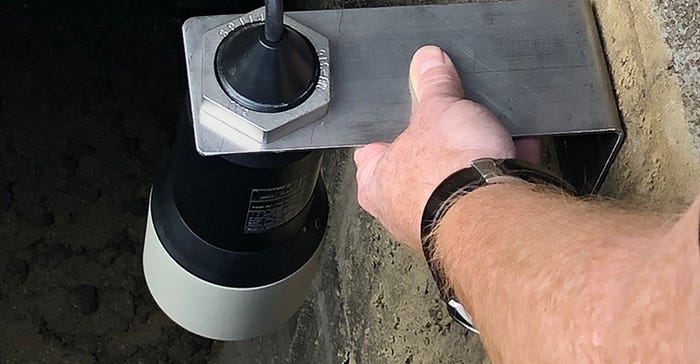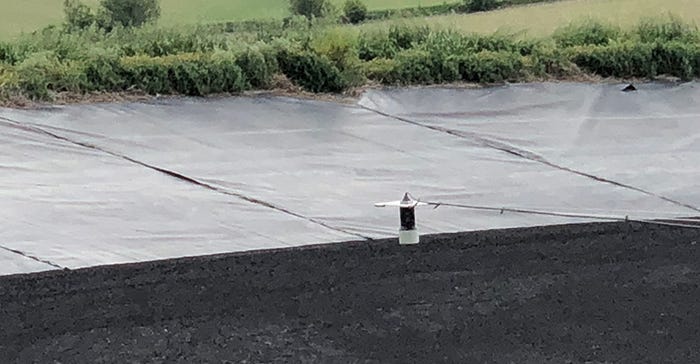Feed, lagoon, and pit monitoring reduced from two hours to 15 minutes a day.
August 1, 2019

Sponsored Content
While hog farms focus on fattening hogs, operations are often leanly staffed with just two or three people. In the case of a major hog producer in Nebraska, just two employees manage four barns and eight feed bins, readying more than 5,000 head for market.
At this location each barn has two silos, used in tandem. Once one silo is emptied, feed is pulled from the second silo and the empty silo is scheduled for refill.
Before installing sensors and software, each silo had to be climbed and a tape measure dropped to estimate how much feed was in each silo. Climbing each bin, dropping a tape, and recording the measurement back in the office could take up to 15 minutes per silo, or about two hours a day.
This had to be done almost every day—rain, snow, or shine. Measurements were handwritten and manually recorded in a spreadsheet. The amount of feed on hand was then calculated by entering an estimate of the amount of feed remaining in each bin. Some days there just wasn’t enough time to get feed inventory done, which lead to a disconnect between the farm and the mill.
Goodbye Tape Measures, Hello Sensors
The biggest roadblock to automating silo measurements for this producer was that of many other hog farms: no power was available at the feed bins.
The solution? A battery-operated sensor from BinMaster that eliminates the need for wiring. Low-power laser level sensors are mounted on top of the bin through a hole cut in the roof. The laser is pointed at the feed near the outlet of the bin. The sensor automatically takes a measurement once an hour, sending data through a wireless gateway to a user-friendly system called FeedView. FeedView converts the distance to the feed remaining in the silo into tonnage and allows for tracking and reporting of feed intake, medicated supplements, head count adjustments, and feed orders.
The producer’s goal was to save time and streamline the ordering process. They found the integration of level sensors and software made their operation more efficient. “With FeedView, I can reorder feed with confidence. We’ve eliminated most delivery emergencies and overfills, all without climbing feed bins… thanks to the wireless level sensors,” says the feed order manager.
Employee safety and measurement consistency are ensured by using automation instead of humans to do the work.
“Using sensors to measure feed levels in bins saves a lot of time and is far safer than climbing ladders. Plus, the laser sensors are more accurate than a tape measure because they are aimed at a fixed point in the silo,” he added.
Customer-Focused Features
Many of the features built into FeedView were developed based upon customer recommendations.
“Some of the great feedback we got from our first customers was to add a feature that allowed them to place a feed order directly with the mill using the software,” stated Scott Hudson, Executive Vice President at BinMaster. “Now farms can view their recent feed orders without having to track them separately. It also allows them to see their order history and plan in advance when the next order needs to be placed.”
The Best Surprise is No Surprise
“Customers hate surprises when it comes to their feed inventory,” said Nathan Grube, regional vice president for BinMaster. “Now, alerts are sent in advance before feed bin levels get low. They can also look at feed levels anytime and avoid the hassle and extra cost of an emergency or weekend delivery.”
With automation, staff can plan ahead and be notified when it is time to order. Additionally, employees can check feed levels any time of day—even on weekends—from any internet capable device. With FeedView, farms are ordering the right amount of feed and eliminating the hassle of overages.
A Fast Return-on-Investment
The producer found that FeedView provided a quick return on a long-lasting investment since:
Not running out of feed ensures animals reach target weight on schedule.
Avoiding extra delivery charges when feed is needed right away increases the bottom line.
Closing out with less than a half-ton of feed when animals are sent for processing reduces waste and costs.
Measuring Waste was the Pits
Another dirty job was tracking the level of waste in pits and lagoons. Dropping a tape in the pit is an unpleasant task subject to inconsistencies. Busy schedules could lead to this task being skipped altogether.

Measuring waste levels is far less daunting without a trip to the pit. “Our technology is very consistent when measuring liquids … even those with foam on top,” stated Hudson of BinMaster. “We have selected technology that is also very accurate, which is important when monitoring levels that tend to change slowly over time.”
Mounting the sensor in a fixed position eliminates the need for people to take manual measurements.

Driving or walking to waste lagoons was an additional time-consuming chore and a real hassle when fields were muddy. To automate, the level sensor is suspended over the lagoon using a cable or mounted on a boom arm. The sensor can be wired to a power supply or powered using a solar panel if no electricity is available.

“There are a lot of regulations concerning waste management and preventing breeches. Additionally, there are requirements to have good record keeping of the levels on mandated intervals,” continued Hudson. “Customers see a real advantage in being able to see waste levels as easily as feed levels with one log in.”
Like with FeedView, the pit and lagoon monitoring option also allows for viewing history, generating reports, and sending automated alerts to a phone.
More Innovation to Come
“Pretty much anything that can be measured can be monitored on a cloud-based dashboard. We’re exploring tying in other things such as power consumption for each barn,” added Hudson. “Working with customers on-farm has really helped BinMaster be responsive to their concerns for controlling costs and saving time.”
About the Author(s)
You May Also Like

.png?width=300&auto=webp&quality=80&disable=upscale)

